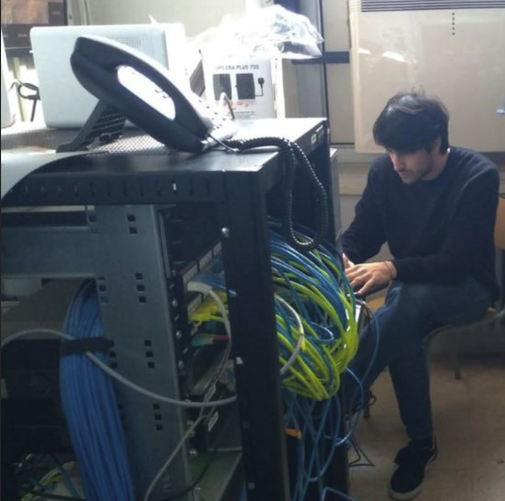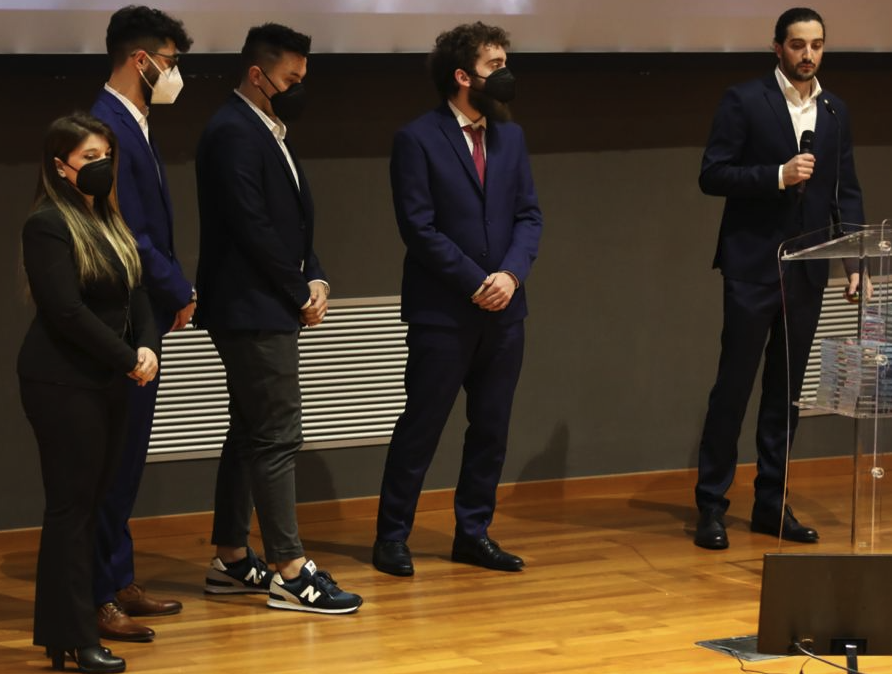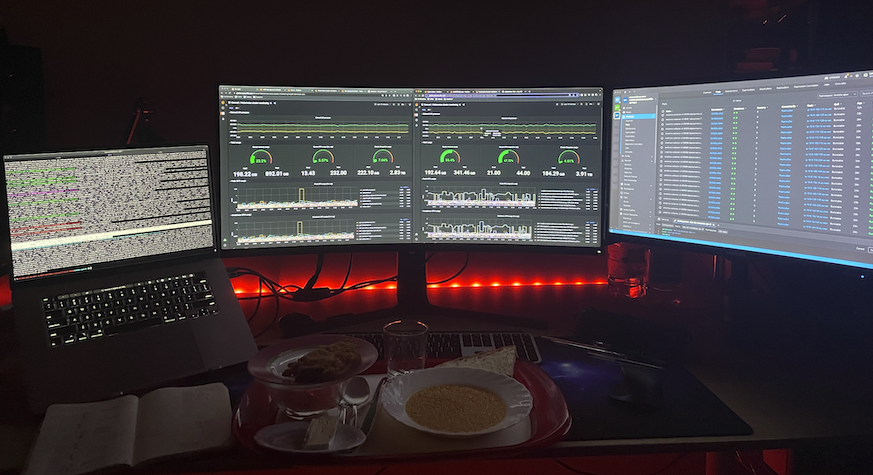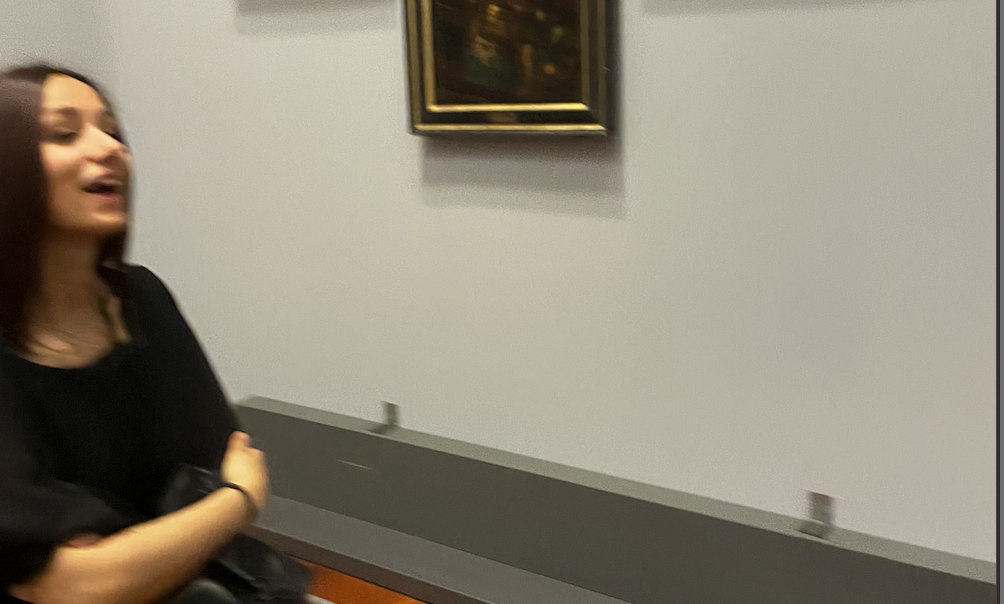History of my careeer
The Very Beginning
Like many others in this field, I started tinkering with computers from a young age. Initially, it was just for playing games, but around the age of 15, I began to wonder what was behind the scenes and how things worked under the hood.
My first “creation” was a website on Altervista. It was terrible. A simple page made with HTML and CSS, which displayed a playlist whenever it was viewed. But I had a domain like stupidfifteenyearoldname.altervista.org, and I felt like a Sensei.
Then came the first computer science lessons at school. Truth be told, I had chosen a school where computer science wasn’t the main focus, but luckily, I had a passionate computer science teacher. During the first two years of high school, we finished the math curriculum a few weeks early, so the teacher gave us basic programming lessons in Pascal. I still remember the IDE’s logo we used, Lazarus. In those weeks, we created simple programs (calculator and power calculations). And this is my experience with computer science at school.
Bachelor’s Degree [Skill up]
When it was time to choose which university to attend, I chose Computer Engineering at Federico II in Naples. After a rocky start, I began to enjoy the journey: programming, networks, computer architecture, and a lot of math and physics. During my fourth year (I should have finished the degree the previous year, darn it), I received a job offer from a nearby company that seemed to be involved in IT.
There’s a new SysAdmin in town! [Job experience]
This is where my professional life chapter begins. I was still finishing my studies and wanted to do it part-time. That “system administrator” position seemed perfect to start and balance both. I was young and naive, knowing nothing about the working world. Long story short: that job quickly turned into a full-time one. Without going into details, within a few months, that job had nothing left to teach me. But I was hungry.

So, I ordered parts for my first homelab PC, spending what was basically my entire salary back then. When I wasn’t at work, I played with my homelab: assembling, disassembling, and experimenting with open-source products. Once satisfied, I wiped everything and tried some other configuration. After a couple of months of this, continuing to work at my first job made no sense anymore. I submitted my resignation. The boss then decided to drastically reduce my working hours while keeping the same pay, just to make me stay. I accepted.
So, I kept working there, with nothing more to learn. But I had much more time to dedicate to my homelab, so my skills grew elsewhere.
I continued like this for a few months until July of that year when I created my first Amazon Web Services account and started playing with EC2 instances. I immediately realized that all the computational capacity issues I had in my homelab could be solved with a couple of clicks on AWS (yes, I’m talking about clicks, the me of that time didn’t know anything about Infrastructure as Code yet).
I tinkered with AWS until September, and in that month, I was ready to resign again. But surprise! My company decided to open a branch entirely dedicated to the Cloud, and I had the opportunity to study it from within. I was given a certification goal to achieve (AWS Cloud Practitioner and Azure Fundamentals). I obtained both in less than a month and started working on small Cloud projects. For months, I continued with my sysadmin job, my homelab, and doing small projects in this Cloud branch of the company.
In December, I left my sysadmin job to focus solely on the Cloud part.
Long story short: the Cloud branch of my company quickly turned into an environmet with very low salaries and no regular contracts for the people working alongside me. Even today, I am amazed that such a place is not monitored by the relevant authorities
At that point, I resigned, this time without accepting the counteroffer.
My world collapsed. I was very disappointed with that job. So, I started doing interviews to find a new one.
Until that moment, I hadn’t had any other job interviews, and starting to have them opened up a whole new world for me. If I had done it earlier, that tragic work experience would have only lasted a few months.
I had 5 interviews in the month of February, receiving four offers. But did I really want to get back into work? Up until that point, I had been operating on autopilot. Finally, after 2 years, I saw regular employment contracts and my pay tripled
I had just come from a devastating work experience and as tempting as those contracts seemed, I rejected them all. I didn’t want to go back to work, I had some studies to finish
In the following months, I dedicated my time to university studies, trying to complete my bachelor’s degree. I was five exams away from finishing; I passed 3 of them in 4 months. Wow, I can still do it. I can still study!
Cyber Hackademy [Skill up]
Meanwhile, the opportunity to attend a cybersecurity academy organized by my university arose. For the top five performers, there was a scholarship up for grabs. Even though I was only studying at that time, I decided to give it a shot. The selection process was divided into three phases: evaluation of qualifications, written exam, and oral exam.
I passed the tests and got in.
The months at Cyber Hackademy were fantastic. Even though some lessons were designed for entry-level participants, I enjoyed it a lot. That experience lasted for 9 months, from May 2021 to January 2022. The last 3 months were dedicated to a project carried out by different teams. I was in one of those teams, TEAM DRAGONS. Our project was an AWS-based honeynet, set up with Terraform and equipped with logging and monitoring tools to gather information about attackers.
And here we are on stage that day, presenting our project.

Epsilon: game changer [Job experience]
During the months of Cyber Hackademy, just before it ended, I started interviewing again. Again, I had bad feelings during the interviews. I passed all of them, but after the first company, I think I developed a radar for toxic workplaces. And that radar went off every time during the interviews BEEP BEEP BEEP.
Until Epsilon came along.
There, I had a great conversation about computer science with the CTO.
The radar didn’t sound, and I started working with them. My time at Epsilon was fantastic.
Great colleagues, very high technical density, engineering depth. What a wonderful place. At Epsilon, I didn’t feel like I had a boss, just people who were technically more knowledgeable than me.
For over a year, I commuted to Epsilon twice a week (their office was just over an hour from where I lived). When I went there, I stayed in a hotel paid for by Epsilon and had delicious poke bowls whenever I stayed in Naples. You can’t imagine how good it was.

This is where I started using Cloud professionally and had my first real encounter with Kubernetes, a technology I would specialize in later.
I can say that the few foundations I have today were built at Epsilon.
“Many say that computer science moves fast, but it’s false. Computer science has been the same for thirty years; it’s the technologies that move fast.”
But even more importantly, Epsilon restored my confidence in the working world. It made me realize that good places exist ❤️
DevDreams [Skill up]
“DevDreams” is a growth path for developers to achieve their goals.
It’s an initiative born from Alfonso Graziano and Alex Prezioso, which I discovered thanks to LinkedIn, managing to join right after its launch.
The concept was as simple as it was ingenious: they had found senior profiles willing to help more junior profiles for free. All you needed to do was apply, and after an initial selection, a Mentor who aligned with your career growth was assigned to the Mentee.
And that’s where I got lucky.
They paired me with Gaspare Vitta as my mentor, an engineer specializing in Developer Experience at Qarik Group, a company based in New York, while working remotely from Italy.
And so, I started having weekly appointments with Gaspare, during which we set a goal for the following week and defined what needed improvement in my ongoing work.
It was a highly formative period, the resources and links Gaspare shared with me were like gold. He opened up a world, showing me things I had never seen before, and I realized that what I thought I knew needed deeper exploration.
The meetings I had with Gaspare laid the foundation for what came next.
SIGHUP: Kubernetes time [Job experience]
During my journey at Epsilon, I was asked to delve into studying a Kubernetes Cluster in an on-premise environment. Until then, I had only seen Kubernetes in its managed AWS version. One thing was clear: going into production with a “bare” Kubernetes cluster was unthinkable. A cluster would need logging, monitoring, access management. Moreover, I had to translate AWS services (ECS, S3, EC2, DynamoDB, etc.) into something usable outside a cloud provider. At that moment, I understood that Kubernetes’ true strength lay in its extensibility. I liked Kubernetes before, but from that moment on, I fell in love with it.
And as I consumed online resources to understand what people were running in their production clusters, I came across the k8s Fury distribution by SIGHUP. At that moment, I thought about how fun it would be to work at a company that had made Kubernetes its core business, but I left it at that.
Several months later, I attended a Meetup, where the speakers were from SIGHUP.
Then a position opened up in that company.
And then…

And now, I find myself here, working in the fantastic Team 2 of the Cloud Native Solution Engineer (CNSE). I only see my colleagues at company events; the work is fully remote. I’m growing a lot, learning many new things, and others I thought I knew.
And it’s through SIGHUP that I had the opportunity to participate in the Kubernetes Community Day Italy for the first time!

Current state
Currently, I work at SIGHUP remotely from my beautiful home office (perhaps in the future, I will dedicate a page to my home office setup).

The technologies I work with the most are Kubernetes, AWS services related to Kubernetes (VPC, EC2, S3, EKS), Ansible, Terraform and Kong Gateway.
When I’m not engaged in IT-related activities, I’m probably watching some anime with my super nerdy girlfriend. And if we’re not doing that, we’re probably at a comic book convention. This is her pretending to explain to me what a triptych is at an art exhibition.

The photo is blurry because my girlfriend is elusive.
If you’re wondering, a triptych is a single pictorial or sculptural work divided into three parts, which can be joined by side hinges or a pedestal known as a predella. The triptych can be completed by an upper part called a cimasa.
What else can I say? Oh, I also enjoy walking.
And when I say walking, I mean for hours. This is the view from one of my evening strolls.
I absolutely love this.
